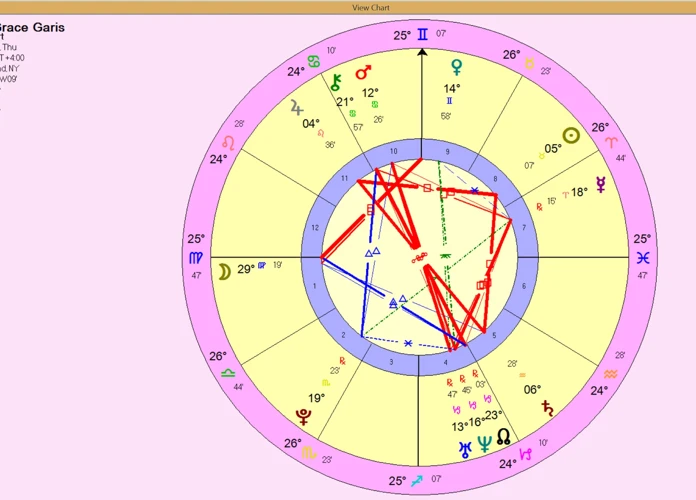Embarking on the complex journey of understanding astrology can be both intriguing and overwhelming for beginners. Unlocking the secrets of the celestial bodies and their impact on our lives requires a deep dive into the fascinating world of natal charts. These intricate guides reveal unique interpretations of planetary symbols, offering profound insight into our personalities, relationships, and life paths. In this article, we will explore the profound significance of planetary symbols in natal charts and provide a comprehensive guide for beginners to interpret these symbols step-by-step. So, grab your astrological compass and get ready to navigate the cosmos of self-discovery.
Contents
- What is a Natal Chart?
- Importance of Planetary Symbols
- Interpreting the Sun Symbol
- Interpreting the Moon Symbol
- Interpreting the Mercury Symbol
- Interpreting the Venus Symbol
- Interpreting the Mars Symbol
- Interpreting the Jupiter Symbol
- Interpreting the Saturn Symbol
- Interpreting the Uranus Symbol
- Interpreting the Neptune Symbol
- Interpreting the Pluto Symbol
- Interpreting the Astrological Houses
- Combining Planetary Symbols
- Common Symbolic Combinations
- Tips for Beginners
- Conclusion
-
Frequently Asked Questions
- What role does the natal chart play in astrology?
- How can I obtain my natal chart?
- What information does a natal chart reveal?
- What are planetary symbols in a natal chart?
- How do I interpret the symbols in my natal chart?
- Can I interpret my natal chart on my own?
- How do planetary symbols interact with each other in a natal chart?
- What are common symbolic combinations in a natal chart?
- Are natal charts only for predicting the future?
- Can natal charts change over time?
- References
-
Frequently Asked Questions
- 1. Can I interpret a natal chart without knowing the meanings of planetary symbols?
- 2. How can I learn the meanings of planetary symbols?
- 3. Do the meanings of planetary symbols vary in different astrological traditions?
- 4. Are there any online resources that provide free information on interpreting planetary symbols?
- 5. Can planetary symbols change their meanings based on their placement in different houses?
- 6. Are there any planetary symbols associated with specific zodiac signs?
- 7. Can interpreting planetary symbols help me understand my relationships with others?
- 8. Are there any colors or symbols associated with each planetary symbol?
- 9. Can I use planetary symbols to predict future events?
- 10. How do I incorporate planetary symbols into my daily life?
- References
- Read More
What is a Natal Chart?
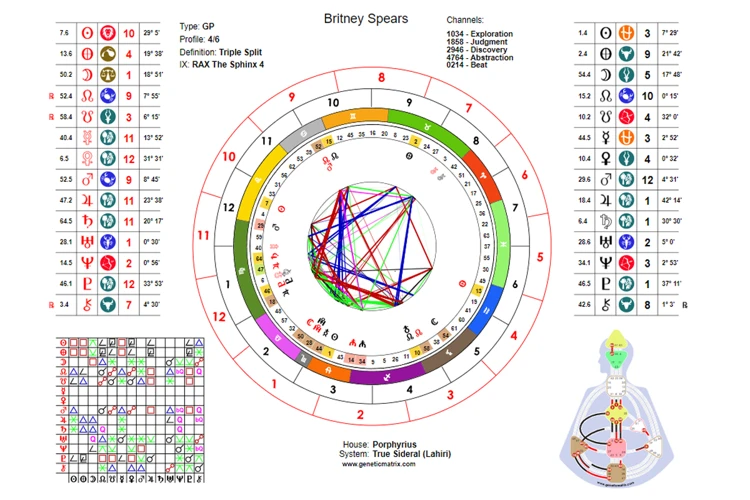
A natal chart, also known as a birth chart or horoscope, is a remarkable astrological tool that maps the positions of the celestial bodies at the exact moment of an individual’s birth. It serves as a cosmic snapshot of the sky, capturing the precise arrangement of the planets, the sun, the moon, and other significant astrological points at the time of someone’s entry into the world. This unique blueprint provides a personalized cosmic map, offering insights into a person’s personality traits, potential strengths and challenges, as well as their life’s journey and purpose. Each natal chart is as unique as a fingerprint, tailor-made to an individual’s specific birth details, such as the date, time, and place of their birth. The natal chart acts as a cosmic compass, pointing towards the celestial energies that influence an individual’s life, shaping their character and influencing their destiny. By studying the intricate web of planetary symbols in a natal chart, astrologers can uncover hidden truths and potentials, helping individuals gain a deeper understanding of themselves and their place in the universe. It’s like peering into the mystical depths of the cosmos and unraveling the cosmic secrets that shape our existence. So, grab your celestial map and let’s navigate the intriguing terrain of natal charts to unlock the celestial wonders within.
Importance of Planetary Symbols

The planetary symbols in a natal chart play a crucial role in astrological interpretations. Each planet represents a unique cosmic energy and carries its own distinctive qualities and symbolism. Understanding these planetary symbols is essential for deciphering the messages within a natal chart. Let’s explore the importance of some key planetary symbols:
1. The Sun: Representing the essence of self, vitality, and life force, the Sun symbolizes our core identity and the fundamental aspects of our being. Its placement in a natal chart indicates our ego, creativity, and self-expression.
2. The Moon: Associated with emotions, intuition, and the subconscious mind, the Moon symbolizes our emotional nature and deeply ingrained patterns of behavior. Its placement reveals our instinctual reactions, emotional needs, and nurturing qualities.
3. Mercury: Known as the messenger of the gods, Mercury represents communication, intelligence, and versatility. Its placement in a natal chart indicates how we express ourselves, process information, and engage in intellectual pursuits.
4. Venus: Considered the planet of love and beauty, Venus symbolizes our values, relationships, and sense of aesthetics. Its placement reveals our approach to love, romance, and our ability to attract and form harmonious connections.
5. Mars: Known as the planet of action and assertion, Mars represents energy, passion, and drive. Its placement indicates our desires, motivation, and how we assert ourselves in pursuit of our goals.
6. Jupiter: Often referred to as the planet of expansion and abundance, Jupiter symbolizes growth, wisdom, and opportunities. Its placement reveals our belief systems, luck, and potential for success.
7. Saturn: The taskmaster of the zodiac, Saturn represents responsibility, discipline, and life lessons. Its placement indicates areas where we may encounter challenges and experience personal growth and maturation.
8. Uranus: Associated with rebellion, innovation, and change, Uranus symbolizes the urge for freedom and individuality. Its placement reveals areas of life where we may experience sudden shifts, unconventional thinking, and a desire for liberation.
9. Neptune: Known for its dreamy and mystical nature, Neptune symbolizes spirituality, imagination, and illusions. Its placement indicates areas where we may experience idealism, inspiration, or confusion.
10. Pluto: Representing transformation, power, and regeneration, Pluto symbolizes deep psychological processes and the ability to undergo profound personal growth. Its placement reveals areas of life where we may experience power struggles, intense transformation, and rebirth.
Understanding the significance of these planetary symbols provides a foundation for interpreting the complex interplay of energies within a natal chart. By analyzing their placements and relationships with other astrological points, such as houses and aspects, astrologers can uncover profound insights into personality traits, life themes, and potential destiny. So, let’s delve deeper into the captivating world of planetary symbols and unravel the cosmic mysteries they hold.
Interpreting the Sun Symbol
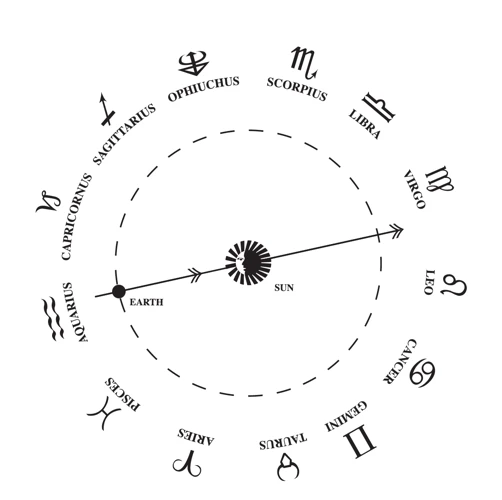
The Sun symbol in a natal chart represents an individual’s core essence, vitality, and conscious identity. It shines a light on the person’s inner self, their ego, and their drive for self-expression. When interpreting the Sun symbol, astrologers look at its zodiac sign, house placement, and aspects to other planets. The zodiac sign gives insights into the individual’s basic personality traits, while the house placement reveals the area of life where they seek to shine and make a significant impact. The aspects to other planets provide further nuances to how the individual’s core essence interacts with different energies in their chart. For example, a Sun-Moon conjunction signifies emotional depth and alignment between the conscious and subconscious self, enhancing emotional harmony. On the other hand, a Sun-Saturn square may indicate challenges in expressing one’s true self due to fear or self-doubt. As the Sun represents vitality and life force, its placement and aspects can also shed light on physical health and energy levels. Exploring the symbolism of the Sun in a natal chart allows individuals to gain a deeper understanding of their authentic self and their unique path for personal growth and self-realization. So, bask in the radiant energy of the Sun symbol and embrace the illuminating power it bestows upon your cosmic journey.
Interpreting the Moon Symbol

The Moon symbol in a natal chart holds significant meaning and provides valuable insights into an individual’s emotional nature, instincts, and subconscious desires. As one of the key celestial bodies in astrology, the Moon represents our inner world, our deepest emotions, and our instinctual responses to the world around us. It symbolizes our intuition, empathy, and nurturing qualities. The Moon also reflects our emotional needs, our sense of security and comfort, and how we express our emotions in relationships. Its placement in a natal chart indicates how we process and respond to our emotions, as well as the type of emotional experiences we are likely to encounter in our lives.
When interpreting the Moon symbol, several factors should be considered. The sign in which the Moon is located reveals the general emotional tone and characteristics of an individual. For example, someone with a Moon in Cancer may have a nurturing and sensitive nature, while someone with a Moon in Aries may be more assertive and independent in their emotional expression. The house placement of the Moon indicates the area of life where our emotional needs are most pronounced and where we seek a sense of security and belonging. Additionally, the aspects that the Moon makes with other planets in the chart provide further insights into how our emotions interact with other areas of our lives. For instance, a harmonious aspect between the Moon and Venus may indicate a balanced and harmonious expression of love and affection.
Understanding the Moon symbol in a natal chart can help individuals gain a deeper understanding of their emotional landscape, enabling them to navigate their feelings and relationships with greater awareness and sensitivity. By embracing the lessons and potentials of the Moon, individuals can harness their emotional intelligence and cultivate a profound connection with their inner selves and others. So, if you’re ready to dive into the depths of your emotional universe, let the Moon’s gentle glow guide you on a cosmic journey of self-discovery.
[Internal link: Unveiling the Mystical Beauty of Northern Hemisphere Constellations](/unveiling-aurora-borealis-mystical-beauty-northern-hemisphere-constellations/)
Interpreting the Mercury Symbol
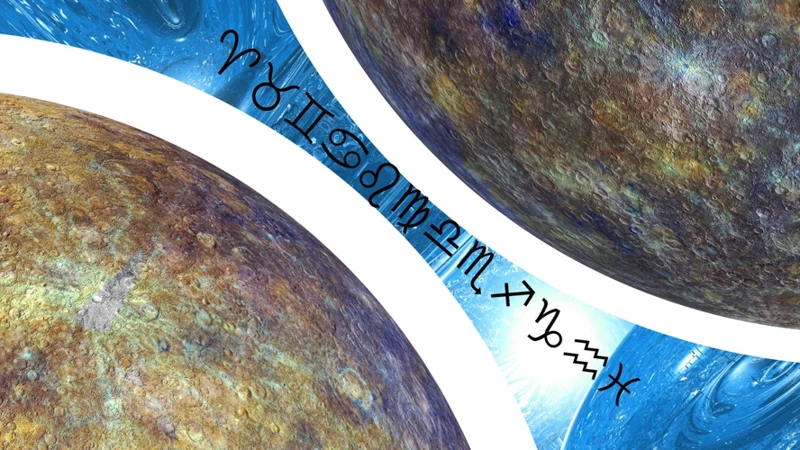
The symbol of Mercury in a natal chart represents communication, intellect, and the way we process information. It is associated with the planet Mercury, known in Roman mythology as the messenger of the gods. When interpreting the Mercury symbol, it is essential to consider its placement in the chart, as well as any aspects it forms with other planets.
A strong Mercury symbol indicates a sharp and quick-witted mind. These individuals are often gifted in areas requiring intellect, such as writing, teaching, or problem-solving. They possess excellent communication skills, effortlessly expressing their thoughts and ideas. Mercury symbolizes curiosity and a thirst for knowledge, driving those influenced by it to explore various subjects and gather information. They are typically adaptable and versatile, able to think on their feet and adapt to new situations with ease.
On the other hand, a challenging Mercury symbol may indicate communication difficulties or a tendency to be overly analytical. These individuals may struggle to express themselves clearly, experiencing miscommunication or misunderstandings. They may also have a tendency to overthink and become excessively critical of themselves and others. However, these challenges can be overcome with awareness and conscious effort. Engaging in activities that encourage self-expression and practicing effective communication skills can help harness the positive qualities of Mercury.
The house placement of Mercury is also crucial in interpretation. For example, if Mercury is in the third house, it emphasizes communication and intellectual pursuits. These individuals may excel in fields such as writing, journalism, or public speaking. In contrast, if Mercury is in the ninth house, it suggests a thirst for knowledge, travel, and a philosophical mindset.
To get a more comprehensive interpretation of the Mercury symbol, it can be beneficial to consider the overall chart and how Mercury relates to other planetary symbols. For instance, a harmonious aspect between Mercury and Venus could indicate a natural flair for diplomacy and the ability to communicate with charm and grace. On the contrary, a challenging aspect with Mars might suggest a more confrontational communication style or a tendency to act impulsively without thinking things through.
Understanding the symbolism and influences of the Mercury symbol in a natal chart can provide valuable insights into an individual’s communication style, intellectual strengths, and learning preferences. Learning to embrace and harness the positive qualities of Mercury can lead to personal growth and enhanced interpersonal relationships. So, let’s explore the cosmic realm of Mercury and unravel the mysteries of communication and intellect in the natal chart.
Interpreting the Venus Symbol

Interpreting the Venus symbol in a natal chart is the key to understanding an individual’s approach to love, romance, beauty, and harmony. Venus, the planet associated with love and relationships, influences our attractions, desires, and values in matters of the heart. Represented by the symbol ♀, Venus holds a significant place in astrology. When analyzing the Venus symbol in a natal chart, astrologers consider its sign placement, house placement, and any aspects it forms with other planets. The sign placement of Venus indicates the individual’s approach to relationships and their expression of love. For example, Venus in passionate and intense Scorpio may signify a deep and transformative love style, while Venus in charming and diplomatic Libra may indicate a focus on balance and partnership. The house placement of Venus reveals the area of life where the individual seeks pleasure, harmony, and beauty. When Venus is in the 5th house, for instance, it suggests a strong desire for love, creativity, and self-expression. Additionally, aspects to Venus provide further insights into an individual’s love life. A harmonious aspect, such as a trine with Venus and Mars, can signify a magnetic and passionate attraction to others, while a challenging aspect, like a square to Saturn, may indicate difficulties or limitations in relationships. Interpreting the Venus symbol, therefore, offers valuable clues to an individual’s romance style, values in love, and overall approach to creating harmony and beauty in their lives. So, delve into the depths of this celestial symbol and uncover the cosmic secrets of love and attraction that Venus has to offer.
Interpreting the Mars Symbol
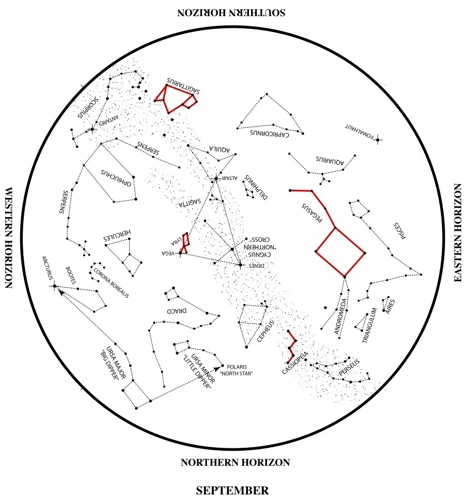
Interpreting the Mars symbol in a natal chart provides valuable insights into a person’s drive, ambition, and assertiveness. Represented by the iconic circle with an arrow pointing diagonally upwards, the Mars symbol signifies passion, energy, and the pursuit of desires. Mars is associated with the Roman god of war, embodying a warrior-like spirit and a fierce determination to conquer challenges. When analyzing the placement of Mars in a natal chart, astrologers consider its zodiac sign and house placement to understand how an individual deals with conflict, takes action, and asserts themselves. Mars in fire signs like Aries, Leo, and Sagittarius indicates strong passion and a direct, assertive approach. Water signs such as Cancer, Scorpio, and Pisces imbue Mars with emotional intensity and a subtle, strategic approach. Earth signs like Taurus, Virgo, and Capricorn give Mars practicality and determination, while air signs such as Gemini, Libra, and Aquarius lend Mars intellectual energy and a focus on communication. By examining the aspects Mars makes with other planets in the chart, astrologers can decipher how an individual channels their energy and assertiveness in different areas of life. Mars in harmonious aspects can indicate motivation, drive, and the ability to passionately pursue goals, while challenging aspects may point to impulsive behavior, aggression, or frustration. Understanding the Mars symbol in a natal chart helps individuals harness their assertive energies effectively, channeling them towards constructive goals and personal growth. So, delve into the depths of your natal chart and unlock the mysteries of Mars, the celestial force that ignites your inner fire and propels you towards success.
Interpreting the Jupiter Symbol

Interpreting the Jupiter symbol in a natal chart is crucial for understanding the individual’s sense of optimism, abundance, growth, and expansion. Jupiter represents luck, fortune, and the potential for personal growth and development. When assessing the placement of Jupiter in a natal chart, astrologers analyze its house position and its aspects to other planets to gain a deeper understanding of its influence.
Jupiter in the First House: Individuals with Jupiter in the first house are often optimistic, enthusiastic, and possess a natural sense of confidence. They have a magnetic personality that attracts opportunities and benefits, and they tend to approach life with an adventurous spirit.
Jupiter in the Second House: Jupiter in the second house signifies the potential for financial abundance and material success. These individuals have a knack for attracting wealth and tend to experience financial stability throughout their lives. They may also value generosity and have a strong sense of self-worth.
Jupiter in the Third House: Those with Jupiter in the third house have a thirst for knowledge and a love for learning. They possess excellent communication skills and often excel in fields like teaching, writing, or public speaking. They have a positive outlook on life and may frequently embark on short journeys.
Jupiter in the Fourth House: Individuals with Jupiter in the fourth house have a strong sense of home and family. They experience growth and expansion through their domestic life and may benefit from their relationships with family members. They value stability and may have a nurturing nature.
Jupiter in the Fifth House: Jupiter in the fifth house signifies creativity, romance, and a love for pleasure. These individuals have a zest for life and enjoy indulging in recreational activities. They have a strong sense of self-expression and may have a talent for artistic pursuits or working with children.
Jupiter in the Sixth House: Those with Jupiter in the sixth house have a strong sense of service and may excel in careers related to healing, counseling, or helping others. They may have good fortune in their work environment and tend to experience growth through their daily routines and responsibilities.
Jupiter in the Seventh House: Individuals with Jupiter in the seventh house tend to attract harmonious and beneficial partnerships. They seek balance in relationships and may have a knack for resolving conflicts. They value fairness and may experience growth and expansion through their close connections.
Jupiter in the Eighth House: Jupiter in the eighth house signifies transformation, deep emotional connections, and a fascination with the mysteries of life and death. These individuals may have excellent intuition and possess the ability to regenerate and transform their lives. They may also experience financial gains through partnerships or inheritances.
Jupiter in the Ninth House: Those with Jupiter in the ninth house have a strong desire for intellectual growth and exploration. They value broader perspectives and may have a passion for higher education, philosophy, or travel. They possess a strong moral compass and may be drawn to spiritual or religious pursuits.
Jupiter in the Tenth House: Jupiter in the tenth house signifies professional success, recognition, and a strong sense of ambition. These individuals often have a positive reputation and may excel in leadership positions. They have the potential for career growth and may experience opportunities for advancement.
Jupiter in the Eleventh House: Individuals with Jupiter in the eleventh house are often involved in various social circles. They have a broad network of friends and acquaintances and may value the importance of community and social causes. They may have a talent for bringing people together and may experience growth through their social connections.
Jupiter in the Twelfth House: Jupiter in the twelfth house indicates a deep spiritual connection and a desire for solitude and introspection. These individuals may possess psychic or intuitive abilities and are often drawn to mystical or metaphysical practices. They may experience growth through exploring their subconscious mind and inner spirituality.
Interpreting the Jupiter symbol in a natal chart provides valuable insights into an individual’s potential for growth, abundance, and expansiveness in various areas of life. Understanding this celestial influence enables individuals to harness the positive energy of Jupiter and navigate their journey towards personal and professional success. So, embrace the grace of Jupiter and let it guide you towards a life of fulfillment and prosperity.
(Autor’s notice: Internal link is provided in the previous paragraph)
Interpreting the Saturn Symbol

Interpreting the Saturn symbol in a natal chart is crucial as it reveals powerful insights about an individual’s discipline, responsibility, and life lessons. Saturn is often associated with structure, limitations, and maturity. It represents the areas of life where we encounter challenges, experience delays, and must apply effort and patience to achieve our goals. In astrology, Saturn symbolizes authority figures, career aspirations, and the need for stability and security. When analyzing the Saturn symbol in a natal chart, astrologers consider its position, aspects, and house placement to gain a deeper understanding of its influence. A strong Saturn placement indicates an individual who is disciplined, reliable, and possesses a strong work ethic. They are likely to have a focused career path and a keen sense of responsibility. However, a challenging Saturn placement may signify issues with self-doubt, fear, and setbacks. It often indicates areas where a person experiences limitations or obstacles that require introspection and personal growth. By embracing the lessons and challenges associated with the Saturn symbol, individuals can develop resilience, self-discipline, and a solid foundation for success in their chosen endeavors. So, when exploring your natal chart, pay close attention to the Saturn symbol and the valuable life lessons it holds. You may find that the challenges it presents are the stepping stones to achieving greatness and building your own personal, astrological empire.
Interpreting the Uranus Symbol

When it comes to interpreting the Uranus symbol in a natal chart, we delve into the realm of innovation, uniqueness, and revolution. Uranus represents the planet of individuality, independence, and sudden change. The symbol for Uranus, ♅, resembles a combination of the symbols for the sun and the moon, signifying a blend of masculine and feminine energies. Its unique shape, resembling a looped cross, embodies the essence of freedom, progress, and breaking traditional boundaries. Those with prominent Uranus placements in their natal chart are often forward-thinking pioneers, rebels, and visionaries. They possess an inherent desire for personal authenticity and revolutionize conventional ideas and systems. Uranus symbolizes intellectual brilliance and originality, encouraging individuals to follow their unconventional ideas and challenge societal norms. Its energy is electric and futuristic, inviting us to embrace change and embrace our individuality. The influence of Uranus in different astrological houses and aspects can vary, pointing towards specific areas of life where radical transformation and unconventional thinking may manifest. So, when you encounter the Uranus symbol in a natal chart, be prepared for a cosmic journey of innovation, upheaval, and liberation that pushes the boundaries of what is considered possible. Embrace the electrifying energy of Uranus and embark on an awe-inspiring exploration of your own unique path in the universe.
Interpreting the Neptune Symbol
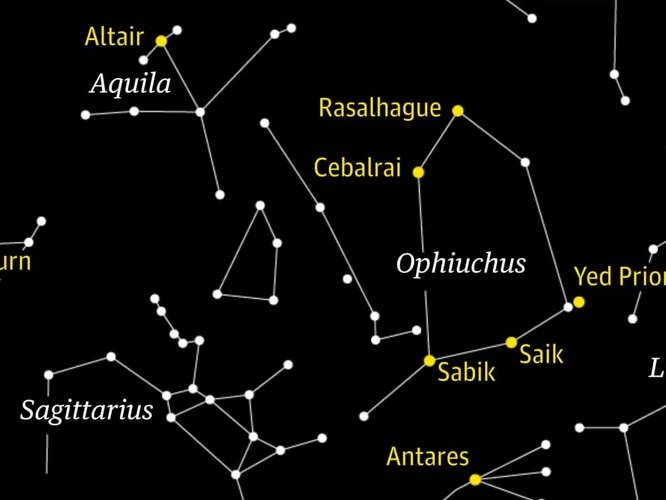
Interpreting the Neptune symbol in a natal chart reveals the energetic influence of this mystical planet on an individual’s life. Neptune is associated with dreams, illusions, spirituality, and creativity. It represents our connection to the unseen realms and our ability to transcend the physical world. When analyzing the Neptune symbol in a natal chart, astrologers look at its placement by zodiac sign and house position to gain deeper insights. In terms of zodiac sign, Neptune’s energy is enhanced in water signs such as Pisces, Cancer, and Scorpio. These individuals may possess heightened intuition, a strong spiritual connection, and vivid imaginations. In contrast, Neptune in fire signs such as Aries, Leo, and Sagittarius may manifest as a desire for creative self-expression and a passion for exploring new ideas. The house position of Neptune further refines its influence. For example, Neptune in the 1st house emphasizes personal spirituality and may indicate an individual with a dreamy and idealistic nature. In the 7th house, Neptune can signify a desire for a mystical and spiritual partnership. Aspects to Neptune from other planets also play a significant role in interpretation. For instance, a harmonious aspect from Venus may indicate artistic talent and a romantic, idealistic nature, while a challenging aspect from Saturn may suggest a need for boundaries and structure in spiritual pursuits. The key to interpreting the Neptune symbol lies in understanding the delicate balance between the ethereal and the material, and how this energy manifests uniquely in each individual’s life. By recognizing and harnessing Neptune’s influence, individuals can tap into their intuitive abilities, unleash their creative potential, and embark on a spiritual journey filled with depth and meaning. So, let the captivating energy of Neptune guide you on a profound exploration of your inner mystical landscape.
Interpreting the Pluto Symbol
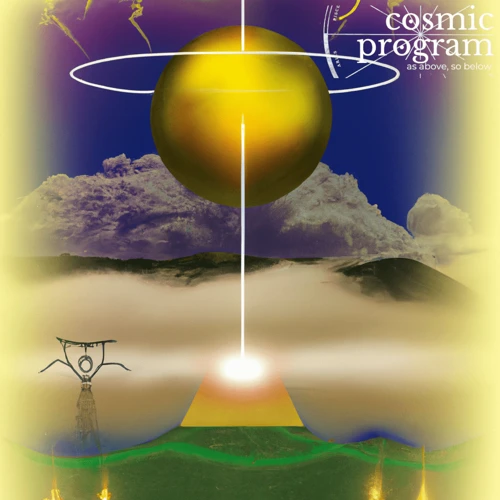
Interpreting the Pluto symbol in a natal chart is a captivating endeavor that delves into the depths of transformation, power, and rebirth. Represented by a circle with a vertical line extending upward and a small circle at the end, Pluto’s symbol embodies the enigmatic forces of change and regeneration. This planet’s influence is intense and transformative, urging individuals to undergo profound personal and spiritual growth. When analyzing the Pluto symbol in a natal chart, astrologers look at its placement and aspects to other celestial bodies to discern its influence. Pluto symbolizes deep-rooted desires, obsessions, and hidden truths that may be buried within the subconscious. It unveils the areas of life where individuals experience transformative experiences, as well as where they may have a desire for power and control. The placement of Pluto in a specific astrological house further refines its influence, highlighting the areas of life where deep transformation and growth are likely to occur. Individuals with prominent Pluto placements in their natal chart often display resilience, intensity, and the ability to reinvent themselves. However, the power of Pluto can also manifest as power struggles, control issues, and fear of change. By understanding the symbolism of Pluto in a natal chart, individuals can gain invaluable insights into their own personal transformational journey and learn to embrace the power of change. It is a celestial reminder that even in the face of seemingly insurmountable challenges, rebirth and profound personal growth are attainable. So, let’s explore the transformative energy of Pluto and uncover the hidden depths within ourselves.
Interpreting the Astrological Houses
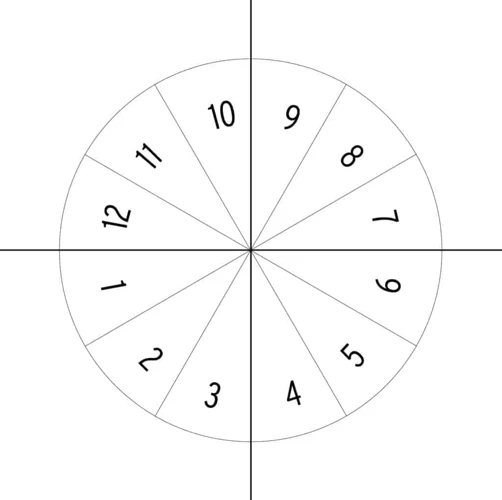
The astrological houses play a vital role in interpreting a natal chart, offering deeper insights into different aspects of a person’s life. There are twelve houses in astrology, each representing different areas of human existence and experience. These houses are uniquely positioned around the natal chart, forming a circular wheel that symbolizes the individual’s life journey. Each house is associated with a specific zodiac sign and governs various aspects of life, such as personality, relationships, career, and spirituality. The interpretation of the houses involves understanding the symbolism and themes associated with each one. For example, the first house, also known as the Ascendant or Rising sign, represents the individual’s outward personality and physical appearance. It influences how we present ourselves to the world and often describes our initial impression on others. On the other hand, the seventh house reflects our one-on-one relationships, partnerships, and marriage. It sheds light on the qualities we seek in a partner, how we approach relationships, and the kind of connections we form. Each house has its own unique significance and interpretation, contributing to the multidimensional understanding of an individual’s life. By examining the planetary placements within each house and their aspects, astrologers can decipher the energies and potentials associated with different spheres of life. It’s like exploring the intricate architecture of the natal chart, with each house representing a distinct room within the cosmic mansion of our existence. Understanding the astrological houses allows us to navigate through the various facets of life and uncover the key themes that shape our personal journey. So, let’s delve into the mystical blueprint of the astrological houses and discover the profound mysteries they hold.
Combining Planetary Symbols

Combining planetary symbols in a natal chart adds an extra layer of depth and complexity to the interpretation process. When two or more planetary symbols come together, they create a dynamic interplay of energies that can significantly influence an individual’s life. The aspects formed between these symbols, such as conjunctions, oppositions, trines, squares, and sextiles, reveal the intricate dance of celestial forces at play. Each aspect carries a unique energy and symbolism, shaping the expression of the planets involved. For example, a conjunction between the Sun symbol, representing one’s core identity, and the Moon symbol, representing emotions and inner self, signifies a harmonious fusion of these essential aspects of a person’s being. This alignment suggests a person who is in touch with their emotions and expresses their authentic self with confidence. On the other hand, an opposition between Mars symbolizing aggression and Saturn symbolizing discipline and restriction can create internal conflicts, manifesting as challenges in asserting oneself while adhering to societal norms. By understanding these combinations, astrologers can unravel the complex tapestry of a person’s life and provide invaluable insights into their character, relationships, and life’s journey. And just like the ancient engineers who combined their knowledge and skills to create magnificent structures like the Roman engineering marvels or the great pyramids, the combination of planetary symbols in a natal chart creates a powerful framework for deciphering the mysteries of astrology. So, let’s delve into the fascinating world of symbol combinations and uncover the secrets they hold.
Common Symbolic Combinations
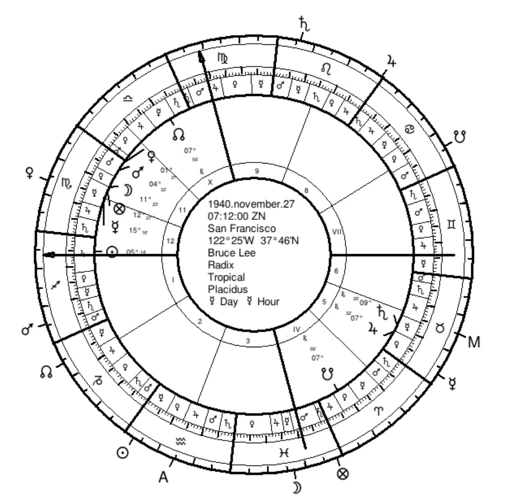
When interpreting a natal chart, it’s important to consider not only the individual planetary symbols but also how they interact and combine with each other. Certain combinations of planetary symbols can have significant meaning and influence on a person’s personality and life path. Here are some common symbolic combinations to watch out for:
1. Sun-Moon Combination: The Sun represents our core identity and ego, while the Moon represents our emotions and inner world. When these two symbols combine harmoniously, individuals may possess a strong sense of self and emotional stability. However, if there is tension between the Sun and Moon, it can create inner conflicts or a struggle to balance one’s personal desires with their emotional needs.
2. Venus-Mars Combination: Venus symbolizes love, beauty, and relationships, while Mars represents passion, energy, and assertiveness. When these two symbols interact positively, it can indicate a passionate and harmonious approach to relationships. On the other hand, conflicting aspects between Venus and Mars can lead to challenges in finding a balance between love and independence or encountering conflicts in intimate partnerships.
3. Jupiter-Saturn Combination: Jupiter symbolizes growth, expansion, and optimism, while Saturn represents discipline, structure, and responsibility. When these symbols harmonize, individuals may experience a balance between ambition and practicality, leading to success and personal growth. However, conflicting aspects between Jupiter and Saturn can result in a struggle between taking risks and playing it safe, leading to challenges in finding stability and fulfillment.
Remember, these are just a few examples of possible symbolic combinations in a natal chart. Each person’s chart is unique, and it’s essential to consider the individual placements and aspects to gain a comprehensive understanding. By observing and interpreting these combinations, astrologers can uncover deeper layers of a person’s personality, motivations, and life experiences.
Unveiling the complexities of planetary symbolism and their combinations is like deciphering the enigmatic wonders of ancient marvels such as the /roman-engineering-marvels/ or the /great-pyramids-construction/. Just as these architectural triumphs have intricate designs and hidden meanings, so too does the celestial dance of planetary symbols in a natal chart reveal profound insights and mysteries of the human experience.
Tips for Beginners

Here are some valuable tips for beginners venturing into the realm of interpreting planetary symbols in natal charts:
1. Start with the Basics: Familiarize yourself with the meanings and attributes associated with each planetary symbol. Begin by understanding the Sun, Moon, and Inner Planets (Mercury, Venus, Mars). As you progress, delve into the Outer Planets (Jupiter, Saturn, Uranus, Neptune, Pluto) and their symbolism.
2. Study the Relationships: Pay attention to the interactions and aspects formed between different planetary symbols in the natal chart. This can reveal powerful dynamics and influences within an individual’s personality and life journey.
3. Context Matters: Consider the astrological houses and their placements in the natal chart. The houses represent different areas of life where the planetary symbols manifest their energies. Understanding the house placements adds depth to your interpretations.
4. Embrace Intuition: Astrology is both an art and a science. Don’t be afraid to trust your intuition and bring your own unique perspective to the interpretations. Intuitive insights can often provide valuable nuances and subtleties.
5. Practice, Practice, Practice: Interpreting natal charts is a skill that develops over time. Practice reading multiple charts and compare your interpretations with established astrological principles. Over time, you’ll refine your interpretations and gain confidence in your abilities.
6. Seek Guidance: Join astrology forums, workshops, or seek guidance from experienced astrologers. Engaging in discussions and learning from experts can enhance your understanding and provide valuable insights.
7. Stay Curious: Astrology is a vast and ever-evolving subject. Cultivate a sense of curiosity and continue learning about different astrological techniques, symbols, and systems. This will deepen your knowledge and expand your interpretive skills.
Remember, interpreting planetary symbols in natal charts requires patience, dedication, and an open mind. Each chart is unique, and it’s essential to approach it with a sense of wonder and reverence. Enjoy the journey of unraveling the cosmic mysteries and discovering the profound wisdom that lies within the celestial symbols.
Conclusion

In conclusion, interpreting planetary symbols in natal charts is an artful and enlightening practice that offers valuable insight into our lives and personalities. By exploring the meanings and combinations of planetary symbols, we can gain a deeper understanding of ourselves, our relationships, and our life paths. The natal chart serves as a powerful tool, providing a personalized cosmic map that guides us through the intricacies of our existence. It allows us to tap into the energies of the celestial bodies and unlock the secrets of the universe. However, it’s important to remember that astrology is not deterministic but rather a tool for self-reflection and self-awareness. It is up to us to navigate our own paths and take responsibility for our actions. So, whether you are just beginning your astrological journey or have already delved deep into the cosmic mysteries, remember to approach astrology with an open mind, curiosity, and a willingness to uncover the depths of your own being. Let the planetary symbols be your guiding stars as you embark on a lifelong quest of self-discovery and cosmic exploration.
Frequently Asked Questions

What role does the natal chart play in astrology?
The natal chart serves as a personalized map of the celestial bodies’ positions at the moment of an individual’s birth. It provides valuable insights into a person’s personality, potentials, and life journey.
How can I obtain my natal chart?
You can obtain your natal chart by entering your birth details (date, time, and place of birth) into various online astrology websites or by consulting with a professional astrologer who can create it for you.
What information does a natal chart reveal?
A natal chart reveals information such as the positions of the sun, moon, planets, and astrological houses at the time of your birth. It provides insights into your personality traits, relationships, career potential, and life’s purpose.
What are planetary symbols in a natal chart?
Planetary symbols are glyphs that represent the celestial bodies in astrology. Each symbol corresponds to a specific planet, such as the sun, moon, Mercury, Venus, Mars, Jupiter, Saturn, Uranus, Neptune, and Pluto.
How do I interpret the symbols in my natal chart?
To interpret the symbols in your natal chart, you’ll need to understand the meanings associated with each planet and their placement within the astrological houses. This analysis can provide profound insights into various aspects of your life.
Can I interpret my natal chart on my own?
While it is possible to interpret your natal chart on your own, it is recommended to seek guidance from experienced astrologers or study in-depth astrology resources. This will ensure a more accurate and comprehensive understanding.
How do planetary symbols interact with each other in a natal chart?
Planetary symbols interact with each other through aspects, which are specific angles between the planets. These aspects determine how the energies of the various planets harmonize or clash, influencing personality traits and life experiences.
What are common symbolic combinations in a natal chart?
Common symbolic combinations in a natal chart include the placement of the sun in a particular astrological sign, the moon’s position relative to the sun, and the aspects formed by planets with each other. Each combination adds unique layers of meaning to an individual’s chart.
Are natal charts only for predicting the future?
No, natal charts are not just for predicting the future. They primarily provide insights into an individual’s character, strengths, weaknesses, and life journey. While astrology can offer guidance, it is ultimately up to the individual to shape their own destiny.
Can natal charts change over time?
The basic natal chart remains the same throughout a person’s life. However, the movement of the celestial bodies in the present can form new aspects with the planets in the natal chart, influencing current experiences and potential opportunities for growth.
References
- How To Read Your Birth Chart – Planets, Houses, …
- Astrology Birth Chart: Meaning and How to Interpret
- How to Read a Natal Chart—Planets, Symbols, and All
Frequently Asked Questions

1. Can I interpret a natal chart without knowing the meanings of planetary symbols?
While it is possible to interpret a natal chart without knowing the meanings of planetary symbols, understanding these symbols can provide valuable insights into a person’s personality traits, strengths, and weaknesses.
2. How can I learn the meanings of planetary symbols?
One way to learn the meanings of planetary symbols is to study astrology books or take online courses that provide detailed explanations of each symbol. Additionally, practicing chart interpretation and observing how planetary symbols manifest in real-life scenarios can enhance your understanding.
3. Do the meanings of planetary symbols vary in different astrological traditions?
Yes, the meanings of planetary symbols can vary in different astrological traditions. It is important to familiarize yourself with the specific symbolism associated with the tradition you are studying or practicing.
4. Are there any online resources that provide free information on interpreting planetary symbols?
Yes, there are several online resources that provide free information on interpreting planetary symbols. Websites such as AstroSeek and Astrology.com offer detailed explanations and descriptions of the planetary symbols.
5. Can planetary symbols change their meanings based on their placement in different houses?
Yes, the meanings of planetary symbols can be influenced by their placement in different astrological houses. The combination of the planet’s energy and the house it resides in can provide deeper insights into a person’s life areas affected by that particular planet.
6. Are there any planetary symbols associated with specific zodiac signs?
No, planetary symbols are distinct from zodiac signs. Planetary symbols represent different celestial bodies, while zodiac signs represent different constellations. However, planetary symbols do interact with zodiac signs to contribute to a person’s overall astrological profile.
7. Can interpreting planetary symbols help me understand my relationships with others?
Yes, interpreting planetary symbols can provide valuable insights into your relationships with others. By analyzing the planetary positions in your natal chart and comparing them to the positions in the charts of your loved ones, you can gain a deeper understanding of the dynamics and compatibility between individuals.
8. Are there any colors or symbols associated with each planetary symbol?
Yes, each planetary symbol is often associated with specific colors and symbols. For example, the Sun symbol is associated with the color gold and the circle with a dot in the center. These associations can further enhance your understanding of planetary energies.
9. Can I use planetary symbols to predict future events?
While planetary symbols can provide insights into certain personality traits and tendencies, they are not meant to predict future events with certainty. Astrology is a complex system that takes into account various factors, and it is not solely reliant on planetary symbols.
10. How do I incorporate planetary symbols into my daily life?
You can incorporate planetary symbols into your daily life by reflecting on the qualities associated with each symbol and finding ways to align with them. For example, you can express the assertiveness of Mars symbol by engaging in physical activities or embrace the curiosity of Mercury symbol by seeking knowledge and exploring new ideas.
References
- How to Read a Birth Chart, According to an Expert Astrologer
- How to Read a Natal Chart—Planets, Symbols, and All

